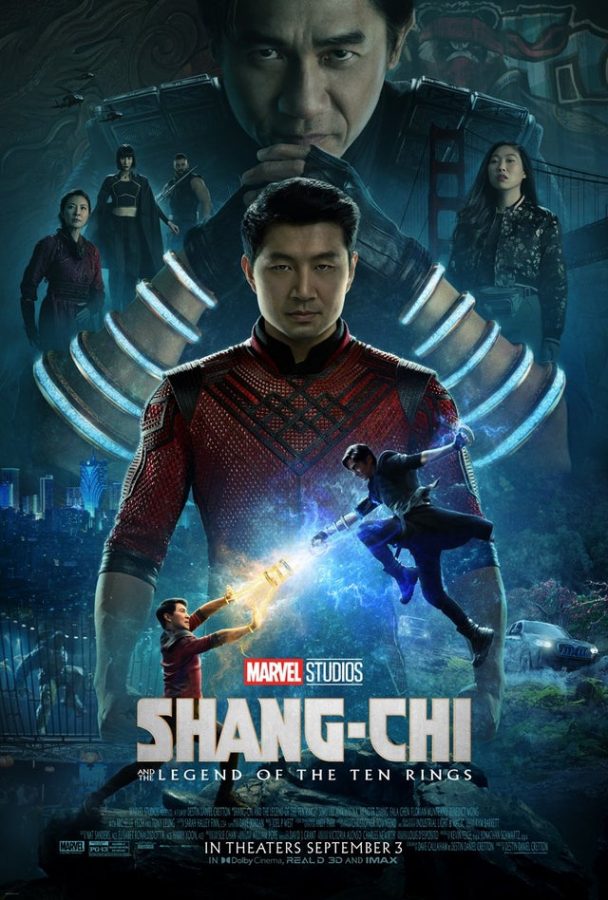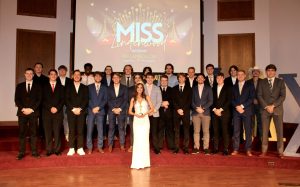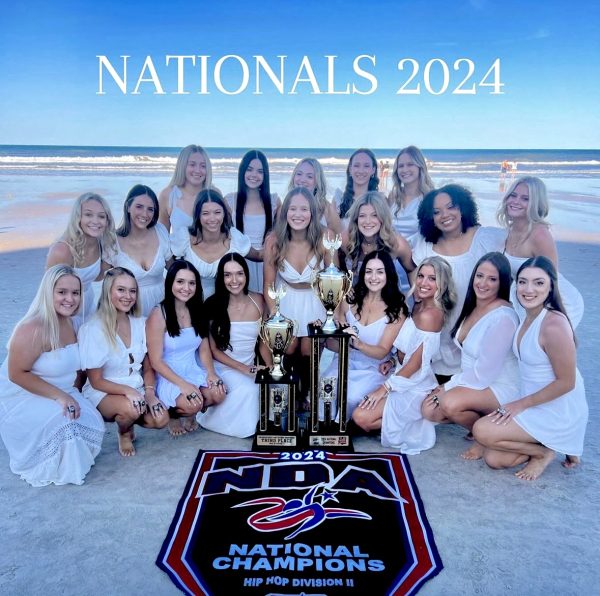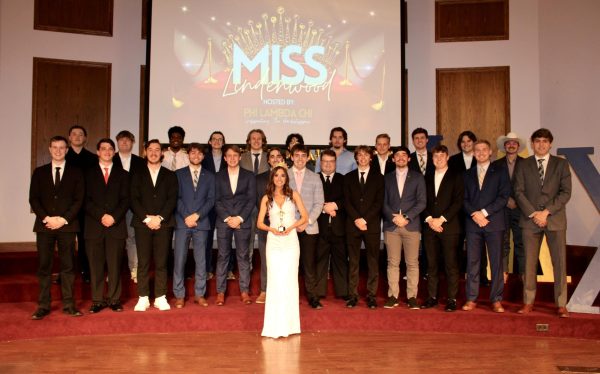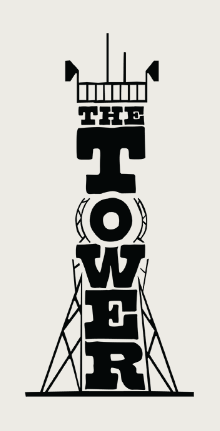REVIEW: “Shang-Chi and the Legend of the Ten Rings”: MCU introduces its first ‘Master of Kung Fu’
September 17, 2021
Editor’s note: This article contains spoilers for the “Shang-Chi and the Legend of the Ten Rings” movie.
I can admit, I grew up with Marvel shows and comic books, but Shang-Chi is a character I rarely saw before this movie came out. At first glance, he struck me as a Bruce Lee superhero, which sounds awesome! So as “Shang-Chi” is killing the box office right now, Marvel Studios is getting more confident with making more movies off of little-known characters from the comic books.
“Shang-Chi” is directed by Destin Daniel Cretton. Cretton has been directing since 2012 and his movies range from social injustice (Just Mercy) and conflicted family drama (The Glass Castle). “Shang Chi” is now Cretton’s first action film and he handled it like an experienced action director. His past movies premises, such as the family drama, could be influences for Shang-Chi’s family issues with both his sister and his father.
“Shang-Chi” stars Simu Liu (Kim’s Convenience) as the titular Shang-Chi, Awkwafina (Crazy Rich Asians) as Katy, Meng’er Zhang (-first-) as Xialing, Fala Chen (–) as Li, and Michelle Yeoh (Crouching Tiger, Hidden Dragon) as Ying Nan. Also starring are Florian Munteanu (Creed II) as Razor Fist and Tony Chiu-Wai Leung (–) as Xe Wenwu, the leader of the Ten Rings and the more faithful version of Marvel Comics’ supervillain: The Mandarin.
Back in 2013, “Iron Man 3” brought ‘the Mandarin’ in as a new villain and leader of the terrorist group The Ten Rings, only to be revealed as a fraud. Also, the Ten Rings were always represented more as terrorists. “Shang-Chi” reveals this version (or maybe there are just different factions?) as a global empire of assassins. Their true leader is Xe Wenwu, a 4,000-year-old Chinese warlord with ten powerful rings on his arms.
The film begins with Wenwu’s history and how he rose to power four millennia ago. Speed up to today and his son Shang-Chi works as a valet in San Francisco, living a life away from Wenwu’s influence. Once he and his friend Katy are attacked by members of the Ten Rings, Shang-Chi teams up with his estranged sister, Xialing, after getting captured by their father and transported to his secret headquarters in the mountains (because it’s a comic book movie).
There, Wenwu explains that their dead mother, Li, is talking to him from beyond the grave and there’s a way to bring her back. They only have to find the mystical Ta Lo where Wenwu first met their mother and gain access to a powerful gate that Li’s people protect from the outside world. Shang-Chi and his group find their way to Ta Lo first and learn from Li’s sister, Ying-Nan, that Wenwu only thinks that he is hearing Li talk to him and that great darkness dwells behind the seal. Wenwu is determined to destroy the seal to free Li at the risk of releasing the evil inside, so Shang-Chi has to stop him and his Ten Rings army.
Liu hasn’t made a lot of films before “Shang-Chi” but he has done plenty of TV roles. He’s appeared in “The Expanse,” the horror series “Slasher”, and his co-star’s Awkwafina’s “Nora from Queen.” Liu’s performance as a martial artist is fun to watch. It felt real on screen that he was an experienced fighter and that the actor took it seriously for the camera (not pointing any fingers, Iron Fist).
Leung as Wenwu was a great performance and a great villain. His main drive in the movie is centered on reviving his wife, whose voice haunts him in his lair. While he has a cold exterior, Leung still shows passion for his family and wants them to be together. I mean, he’s still evil and everything but he has a very human and understanding motivation for his actions in the movie. It sort of related to Zemo’s in “Civil War” or Vulture in “Spider-Man: Homecoming.”
As I mentioned earlier, I was expecting Shang-Chi to fight a lot like Bruce Lee. Well, fighting styles anyways. But actually, I was surprised to see his methods were a lot more like Jackie Chan. And that is not a downgrade; both were martial art legends. Lee had calmer and more focused scenes, where he waited and attacked his opponents. Chan was way more into improvisation and energetic fights, which is more of the vibe I got from “Shang-Chi’s” fight scenes. There was also a lot of use of the environment in the fight scenes, which was another of Chan’s tropes. A great example is a fight scene between Shang-Chi and Ten Rings assassins on the side of a skyscraper, fighting on bamboo scaffolding. While fighting, both Shang-Chi and the assassins would use the scaffolding to flip around or catch themselves from falling, or even Xialing jumping on a floorboard to flip it over and use it as a ranged weapon.
The studios used a lot of Chinese mystical myths to help create the world of Ta Lo. It’s an interesting place, supposedly in its own dimension. Within it is a range of creatures that are inspired by Chinese art. This includes dragons, nine-tailed foxes, guardian lions, and a six-legged, four-winged headless hundun creature named Morris. It was a creative take to bring these legendary myths to life to connect to Shang-Chi and MCU lore. I’d be interested to see more of Ta Lo or similar places like this explore in future Marvel movies.
Speaking of future movies, “Shang-Chi” is setting up potential plot threads for future connections to the Avengers and space. Wong shows up as a bonus cameo, fighting Hulk villain Abomination in a cage match from the movie’s trailer. The Abomination, who hasn’t been seen since way back in 2008’s “The Incredible Hulk,” is still played by Tim Roth. Wong is showing up more and more now, especially in the movie trailers. He also appears in “Spider-Man: No Way Home,” giving Doctor Strange some advice before heading off in a portal. Wong seems to be going around now, teleporting everywhere to help, recruit, or scold others in the MCU.
And, naturally, there’s a mid- and post-credit scene. It’s Marvel!



